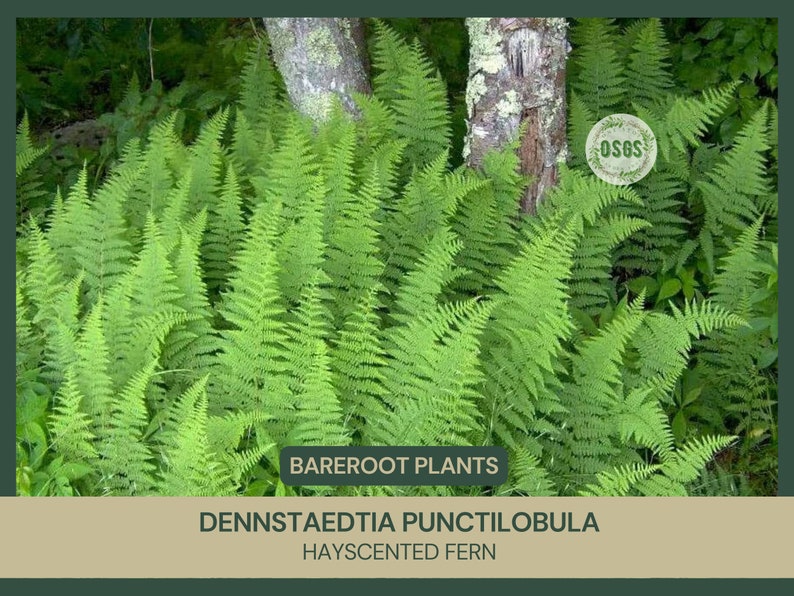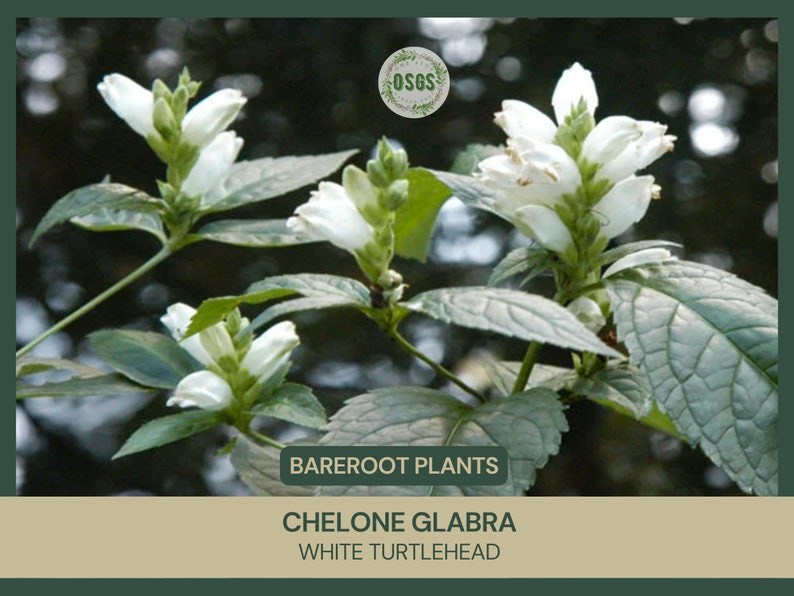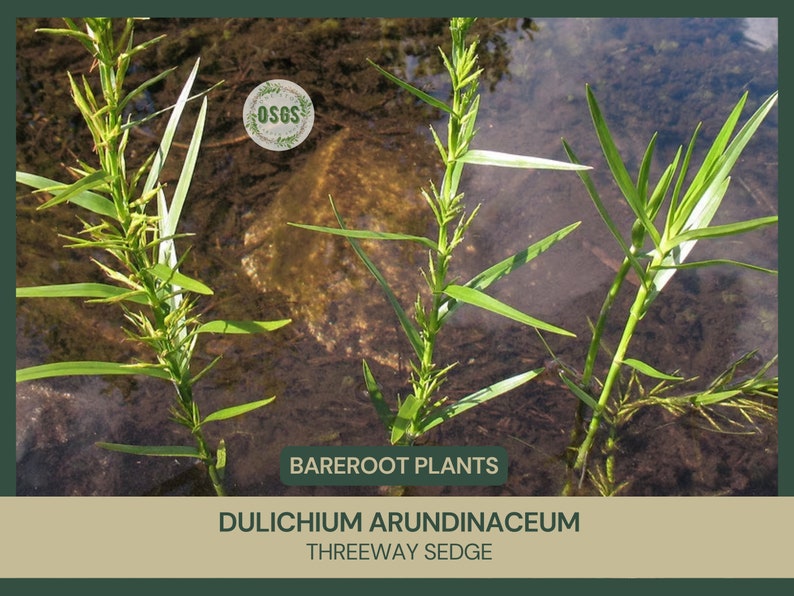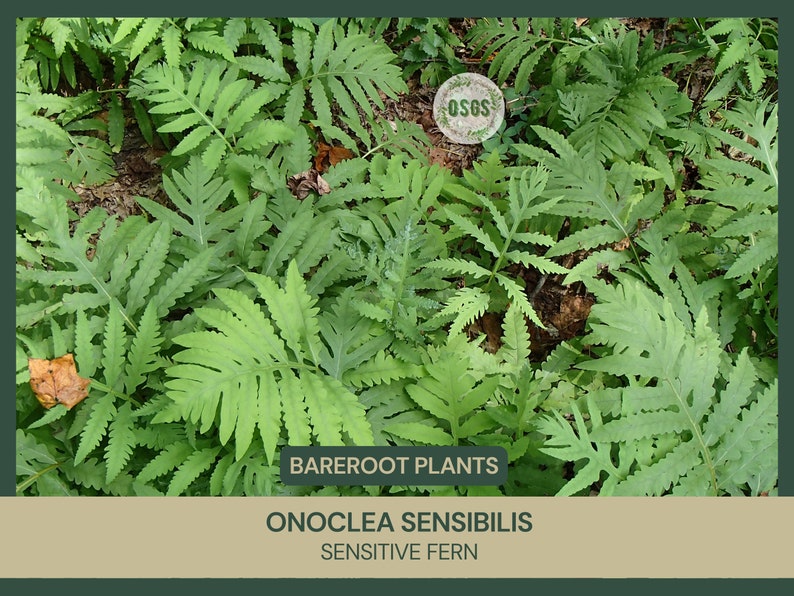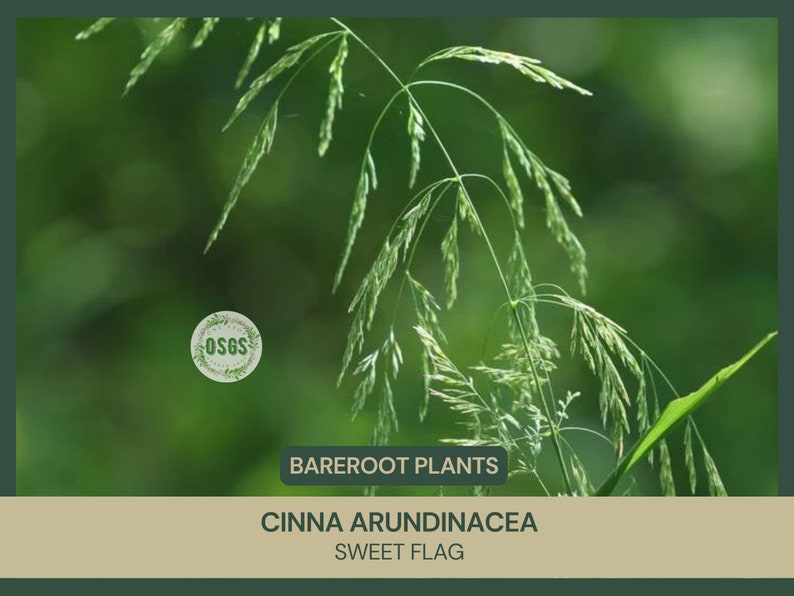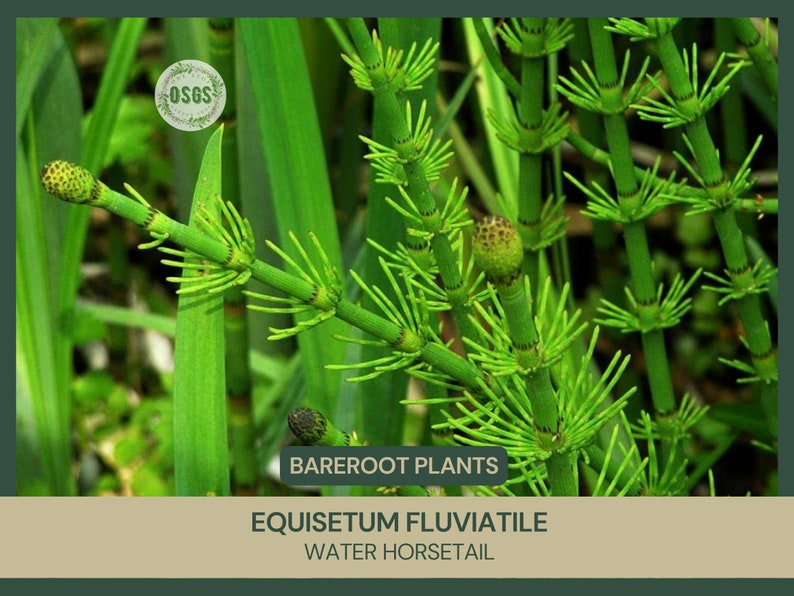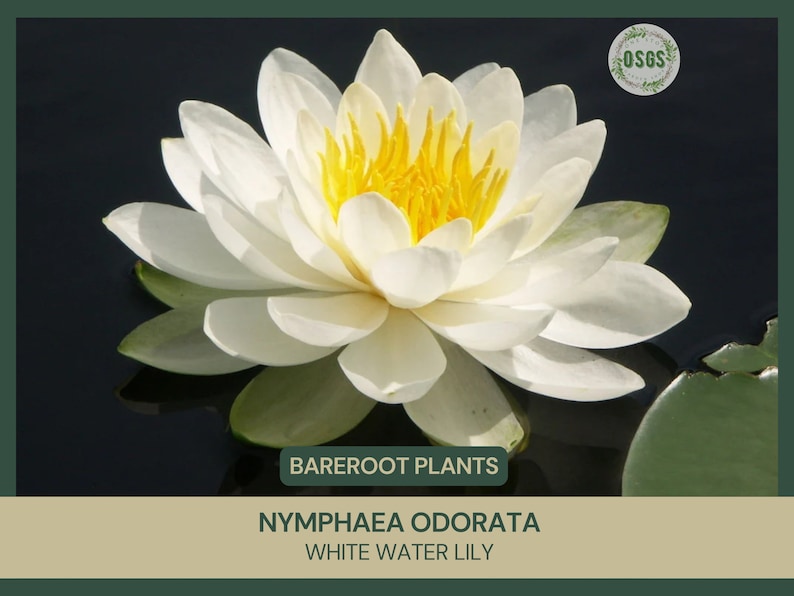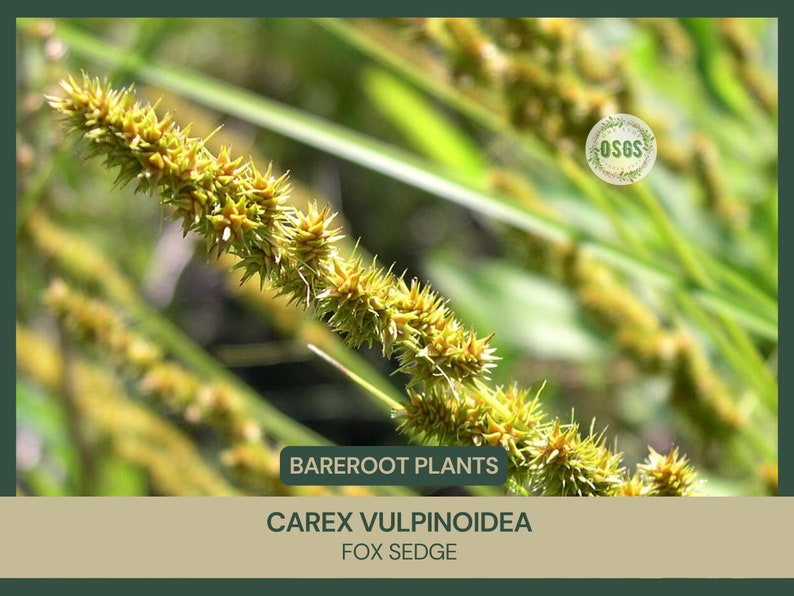Search Results
297 results found with an empty search
- Dennstaedtia punctilobula
<<< Back Message us Related Videos Etsy Shop eBay Shop Dennstaedtia punctilobula, commonly known as Hayscented Fern, is a woodland fern cherished for its delicate fronds and distinctive, hay-like fragrance. This deciduous fern adds a touch of serenity to shaded gardens, woodland edges, and naturalistic landscapes, creating a tranquil and visually appealing woodland haven. ● Features finely textured, lacy fronds with a subtle fragrance reminiscent of fresh hay. ● Flourishes in well-drained, humus-rich soil, thriving in the dappled shade of woodland environments. ● Provides an elegant and fragrant addition to shaded gardens and wooded areas. Plant Care Effective care is fundamental for the healthy growth and woodland serenity of Hayscented Fern. ● Sunlight: Thrives in partial to full shade, adapting well to the lower light levels of woodland settings. ● Soil: Plant in well-drained, humus-rich soil, emulating its natural woodland habitat. ● Watering: Maintain consistent soil moisture, as Hayscented Fern prefers moderately damp conditions. ● Spacing: Plant ferns approximately 12-18 inches apart to allow for their spreading nature. ● Fertilizing: Minimal fertilization is necessary; ferns generally thrive without heavy nutrient inputs. Planting and Propagation Planting and propagating Hayscented Fern contribute to the woodland serenity of shaded landscapes. ● Plant in early spring or early fall for optimal establishment. ● Propagate through division, separating clumps, during the early growing season. ● Allow for natural self-spreading for additional ferns in subsequent growing seasons. Pests and Diseases Hayscented Fern is generally hardy, but vigilance against potential issues is essential. ● Monitor for pests like slugs or snails; use organic remedies if necessary. ● Disease resistance is high, but proper air circulation helps prevent fungal problems. ● Avoid over-fertilizing to maintain the natural and woodland serenity of the fern. Feeding and Fertilizing Minimal feeding is recommended for Hayscented Fern to preserve its delicate appearance. ● Use a balanced, organic fertilizer sparingly, if necessary, in early spring. ● Over-fertilization can lead to excessive growth, potentially diminishing the fern's elegant fronds. Varieties and Cultivars Explore different varieties of Hayscented Fern for potential variations in frond size and color. ● Varieties may exhibit differences in overall height, frond shape, or growth habit. ● Experiment with different cultivars to create a visually stunning and diverse woodland haven. Growing Tips and Tricks Additional tips ensure a thriving woodland landscape with Hayscented Fern. ● Monitor soil moisture levels, adjusting watering frequency based on weather conditions. ● Consider companion planting with other shade-loving plants for a harmonious and textured woodland garden. ● Embrace the natural spread of ferns while managing potential overgrowth to maintain woodland serenity. Troubleshooting Common Problems Proactive troubleshooting can maintain the health and woodland serenity of Hayscented Fern. ● Yellowing fronds may indicate nutrient deficiencies or poor soil drainage. ● Sparse growth may result from insufficient shade or competition with other plants. ● Regularly remove debris and decaying plant material to promote a clean and tranquil appearance in the woodland garden. Read our blogs for more gardening tips! Edible Wetland Plants in Traditional and Indigenous Cuisines Introduction to Edible Wetland Plants in Traditional and Indigenous Cuisines Edible Wetland Plants have long been a cornerstone in... Community Involvement in Wetland Conservation: Starting a Local Initiative Understanding the Value of Wetlands Wetlands, those lush interfaces between land and water, are not just beautiful facets of our natural... Flower Structures of Common Native Flowers Flower Structures of Common Native Flowers Native flowers are more than just a splash of color in our landscapes; they are a vital part... Seasonal Changes and Plant Dormancy I'M NOT DEAD, JUST DORMANT! The rhythm of the natural world is deeply influenced by the changing seasons, dictating the life cycle of... Leaf Shapes in Native Plant Identification Identifying native plants is a fascinating and vital skill, especially for botanists, gardeners, and nature enthusiasts. One of the most...
- Chelone glabra
<<< Back Message us Related Videos Etsy Shop eBay Shop Chelone glabra, commonly known as White Turtlehead, is a graceful wetland perennial appreciated for its distinctive white blooms and serene garden presence. This perennial adds an elegant touch to water gardens, pond edges, and damp meadows, creating a tranquil and visually appealing atmosphere. ● Features unique turtlehead-shaped white flowers, resembling a turtle's head in appearance. ● Flourishes in moist soils of wetland areas, making it a delightful addition to water-rich landscapes. ● Provides nectar for pollinators, including butterflies and bees, enhancing the biodiversity of the garden. Plant Care Effective care is fundamental for the healthy growth and serene beauty of White Turtlehead. ● Sunlight: Thrives in partial shade to full sun, adapting well to varying light conditions. ● Soil: Plant in consistently moist, well-drained soil, emulating its natural wetland habitat. ● Watering: Maintain a consistent level of soil moisture, as White Turtlehead prefers damp conditions. ● Spacing: Plant Turtleheads approximately 18-24 inches apart to allow for their spreading nature. ● Fertilizing: Apply a balanced, slow-release fertilizer in early spring to support robust flowering. Planting and Propagation Planting and propagating White Turtlehead contribute to the serene beauty of water-rich landscapes. ● Plant in early spring or late fall for optimal establishment. ● Propagate through division, separating clumps, in the early growing season. ● Seeds can be sown in a moist environment for natural propagation. Pests and Diseases While White Turtlehead is generally hardy, vigilance against potential issues is essential. ● Monitor for pests like aphids or caterpillars; use organic remedies if necessary. ● Disease resistance is high, but proper air circulation helps prevent fungal problems. ● Avoid over-fertilizing to maintain the natural and serene beauty of the wetland blooms. Feeding and Fertilizing Regular feeding supports the growth of White Turtlehead but should be done with care. ● Use a balanced, water-soluble fertilizer in early spring for sustained nutrient availability. ● Over-fertilization can lead to excessive foliage growth, diminishing the impact of the unique blooms. Varieties and Cultivars Explore different varieties of White Turtlehead for diverse bloom shapes and sizes in your water-rich landscape. ● Varieties may exhibit variations in flower color, height, or foliage characteristics. ● Mix and match cultivars to create a visually stunning and diverse display of wetland elegance. Growing Tips and Tricks Additional tips ensure a thriving water-rich landscape with White Turtlehead. ● Choose a location with varying water depths to accommodate its adaptable growth. ● Monitor soil moisture levels, adjusting watering frequency based on weather conditions. ● Consider companion planting with other moisture-loving species for a harmonious and diverse wetland garden. Troubleshooting Common Problems Proactive troubleshooting can maintain the health and serene beauty of White Turtlehead. ● Yellowing leaves may indicate nutrient deficiencies or poor water quality. ● Sparse growth may result from insufficient sunlight or overcrowding. ● Regularly remove debris and decaying plant material to prevent water contamination and maintain a pristine appearance. Read our blogs for more gardening tips! Edible Wetland Plants in Traditional and Indigenous Cuisines Introduction to Edible Wetland Plants in Traditional and Indigenous Cuisines Edible Wetland Plants have long been a cornerstone in... Community Involvement in Wetland Conservation: Starting a Local Initiative Understanding the Value of Wetlands Wetlands, those lush interfaces between land and water, are not just beautiful facets of our natural... Flower Structures of Common Native Flowers Flower Structures of Common Native Flowers Native flowers are more than just a splash of color in our landscapes; they are a vital part... Seasonal Changes and Plant Dormancy I'M NOT DEAD, JUST DORMANT! The rhythm of the natural world is deeply influenced by the changing seasons, dictating the life cycle of... Leaf Shapes in Native Plant Identification Identifying native plants is a fascinating and vital skill, especially for botanists, gardeners, and nature enthusiasts. One of the most...
- Dulichium arundinaceum
<<< Back Message us Related Videos Etsy Shop eBay Shop Dulichium arundinaceum, commonly known as Threeway Sedge, is a wetland sedge appreciated for its triple elegance, featuring slender stems, distinctive foliage, and adaptability to various water-rich environments. This perennial adds a touch of grace to the edges of ponds, marshes, and wet meadows, creating a visually appealing and harmonious wetland landscape. ● Features slender, arching stems with clusters of three-ranked leaves, providing a unique visual interest. ● Flourishes in consistently moist to wet soils, thriving in the water-rich conditions of wetland habitats. ● Offers both ornamental value and habitat support for wetland ecosystems. Plant Care Effective care is fundamental for the healthy growth and triple elegance of Threeway Sedge. ● Sunlight: Thrives in full sun to partial shade, adapting well to varying light conditions in wetland environments. ● Soil: Plant in consistently moist to wet, well-drained soil, emulating its natural wetland habitat. ● Watering: Maintain a consistent level of soil moisture, as Threeway Sedge prefers damp to wet conditions. ● Spacing: Plant sedges approximately 12-18 inches apart to allow for their spreading nature. ● Fertilizing: Minimal fertilization is necessary; sedges generally thrive in nutrient-poor wetland soils. Planting and Propagation Planting and propagating Threeway Sedge contribute to the triple elegance of wetland landscapes. ● Plant in early spring or early fall for optimal establishment. ● Propagate through division, separating rhizomes, during the active growing season. ● Allow for natural self-spreading for additional sedges in subsequent growing seasons. Pests and Diseases Threeway Sedge is generally hardy, but vigilance against potential issues is essential. ● Monitor for pests like aphids or grasshoppers; use organic remedies if necessary. ● Disease resistance is high, but proper water circulation helps prevent fungal problems. ● Avoid over-fertilizing to maintain the natural and triple elegance of the sedge. Feeding and Fertilizing Minimal feeding is recommended for Threeway Sedge to preserve its delicate appearance. ● Use a balanced, water-soluble fertilizer sparingly, if necessary, in early spring. ● Over-fertilization can lead to excessive growth, potentially diminishing the sedge's elegant form. Varieties and Cultivars Explore different varieties of Threeway Sedge for potential variations in height and leaf arrangement. ● Varieties may exhibit differences in overall size, stem color, or growth habit. ● Experiment with different cultivars to create a visually stunning and diverse display of wetland elegance. Growing Tips and Tricks Additional tips ensure a thriving wetland landscape with Threeway Sedge. ● Monitor soil moisture levels, adjusting watering frequency based on weather conditions. ● Consider companion planting with other water-loving species for a harmonious and diverse wetland garden. ● Embrace the natural spread of sedges while managing potential overgrowth to maintain the triple elegance of wetland landscapes. Troubleshooting Common Problems Proactive troubleshooting can maintain the health and triple elegance of Threeway Sedge. ● Yellowing foliage may indicate nutrient deficiencies or poor water quality. ● Sparse growth may result from insufficient sunlight or overcrowding. ● Regularly remove debris and decaying plant material to prevent water contamination and maintain a pristine appearance in the wetland garden. Read our blogs for more gardening tips! Edible Wetland Plants in Traditional and Indigenous Cuisines Introduction to Edible Wetland Plants in Traditional and Indigenous Cuisines Edible Wetland Plants have long been a cornerstone in... Community Involvement in Wetland Conservation: Starting a Local Initiative Understanding the Value of Wetlands Wetlands, those lush interfaces between land and water, are not just beautiful facets of our natural... Flower Structures of Common Native Flowers Flower Structures of Common Native Flowers Native flowers are more than just a splash of color in our landscapes; they are a vital part... Seasonal Changes and Plant Dormancy I'M NOT DEAD, JUST DORMANT! The rhythm of the natural world is deeply influenced by the changing seasons, dictating the life cycle of... Leaf Shapes in Native Plant Identification Identifying native plants is a fascinating and vital skill, especially for botanists, gardeners, and nature enthusiasts. One of the most...
- Eutrochium maculatum
<<< Back Message us Related Videos Etsy Shop eBay Shop Eutrochium maculatum, commonly known as Spotted Joe-pye Weed, is a native perennial admired for its graceful stature and vibrant floral display. This plant adds a touch of natural elegance to wetland gardens, marshy areas, and pond edges, creating a visually appealing and ecologically beneficial landscape. ● Features tall, erect stems adorned with whorls of lance-shaped leaves and topped with clusters of pink to mauve flowers. ● Flourishes in consistently moist to wet soils, adapting well to the water-rich conditions of wetland habitats. ● Offers both ornamental value and ecological benefits, attracting pollinators and supporting biodiversity. Plant Care Effective care is fundamental for the healthy growth and graceful beauty of Spotted Joe-pye Weed. ● Sunlight: Thrives in full sun to partial shade, with more sun resulting in denser flower clusters. ● Soil: Plant in well-drained, moisture-retentive soil rich in organic matter for optimal growth. ● Watering: Maintain consistent soil moisture, especially during the growing season. ● Spacing: Plant Joe-pye weed approximately 24-36 inches apart to allow for its impressive height and spread. ● Fertilizing: Minimal fertilization is necessary; Joe-pye weed generally thrives without heavy nutrient inputs. Planting and Propagation Planting and propagating Spotted Joe-pye Weed contribute to the graceful beauty of wetland landscapes. ● Plant in early spring or early fall for optimal establishment. ● Propagate through division in spring, ensuring each division has roots and shoots. ● Allow for natural self-seeding for additional Joe-pye weed in subsequent growing seasons. Pests and Diseases Spotted Joe-pye Weed is generally hardy, but vigilance against potential issues is essential. ● Monitor for pests like aphids or caterpillars; use organic remedies if necessary. ● Disease resistance is high, but good air circulation helps prevent fungal problems. ● Avoid over-fertilizing to maintain the natural and graceful beauty of the Joe-pye weed. Feeding and Fertilizing Minimal feeding is recommended for Spotted Joe-pye Weed to preserve its delicate appearance. ● Use a balanced, all-purpose fertilizer sparingly, if necessary, in early spring. ● Over-fertilization can lead to excessive growth, potentially diminishing the plant's natural form. Varieties and Cultivars Explore different varieties of Spotted Joe-pye Weed for potential variations in height and flower color. ● Varieties may exhibit differences in overall size, bloom time, or stem color. ● Experiment with different cultivars to create a visually stunning and diverse display of graceful wetland beauty. Growing Tips and Tricks Additional tips ensure a thriving wetland landscape with Spotted Joe-pye Weed. ● Monitor soil moisture levels, adjusting watering frequency based on weather conditions. ● Consider companion planting with other moisture-loving species for a harmonious and diverse wetland garden. ● Embrace the natural spread of Joe-pye weed while managing potential overgrowth to maintain its graceful beauty. Troubleshooting Common Problems Proactive troubleshooting can maintain the health and graceful beauty of Spotted Joe-pye Weed. ● Yellowing leaves may indicate nutrient deficiencies or poor soil drainage. ● Flopping stems may result from inadequate support or overly rich soil; provide support and reduce fertility if necessary. ● Regularly remove spent flowers to encourage prolonged blooming and a neat appearance in the wetland garden. Read our blogs for more gardening tips! Edible Wetland Plants in Traditional and Indigenous Cuisines Introduction to Edible Wetland Plants in Traditional and Indigenous Cuisines Edible Wetland Plants have long been a cornerstone in... Community Involvement in Wetland Conservation: Starting a Local Initiative Understanding the Value of Wetlands Wetlands, those lush interfaces between land and water, are not just beautiful facets of our natural... Flower Structures of Common Native Flowers Flower Structures of Common Native Flowers Native flowers are more than just a splash of color in our landscapes; they are a vital part... Seasonal Changes and Plant Dormancy I'M NOT DEAD, JUST DORMANT! The rhythm of the natural world is deeply influenced by the changing seasons, dictating the life cycle of... Leaf Shapes in Native Plant Identification Identifying native plants is a fascinating and vital skill, especially for botanists, gardeners, and nature enthusiasts. One of the most...
- Polygonum amphibium
<<< Back Message us Related Videos Etsy Shop eBay Shop Polygonum amphibium, commonly known as Water Smartweed, is an aquatic perennial valued for its graceful foliage and adaptability to water environments. This water-loving plant enhances the serene beauty of ponds, water gardens, and wetland areas, adding a touch of elegance and ecological value. ● Features lance-shaped leaves and spikes of pink or white flowers, creating an aesthetically pleasing display in aquatic settings. ● Flourishes in consistently wet to submerged soils, showcasing adaptability and resilience. ● Offers both ornamental value and habitat support, contributing to the tranquility and biodiversity of water ecosystems. Plant Care Effective care is fundamental for the healthy growth and aquatic elegance of Water Smartweed. ● Sunlight: Adapts well to full sun or partial shade, thriving in the dappled light of water features. ● Soil: Plant in well-drained aquatic soil or directly in submerged conditions, ensuring proper anchoring. ● Watering: Maintain consistently wet to submerged soil conditions to support vigorous growth. ● Spacing: Plant Water Smartweed with a spacing of about 12-18 inches to allow for its spreading growth habit. ● Fertilizing: Minimal fertilization is necessary; Water Smartweed generally thrives without heavy nutrient inputs. Planting and Propagation Planting and propagating Water Smartweed contribute to the aquatic elegance of water-centric environments. ● Plant in early spring or early fall for optimal establishment. ● Propagate through division of rhizomes or stem cuttings, ensuring each division has healthy roots and buds. ● Allow for natural self-spreading for additional Water Smartweeds in subsequent growing seasons. Pests and Diseases Water Smartweed is generally hardy, but vigilance against potential issues is essential. ● Monitor for pests like aphids or waterborne insects; use organic remedies if necessary. ● Disease resistance is high, but proper water circulation helps prevent fungal problems. ● Avoid over-fertilizing to maintain the natural and aquatic elegance of Water Smartweed. Feeding and Fertilizing Minimal feeding is recommended for Water Smartweed to preserve its delicate appearance. ● Use a slow-release aquatic fertilizer sparingly, placing it near the roots in early spring. ● Over-fertilization can lead to excessive growth, potentially diminishing the plant's natural form. Varieties and Cultivars Explore different varieties of Water Smartweed for potential variations in flower color and leaf size. ● Varieties may exhibit differences in overall height, flower shape, or growth habit. ● Experiment with different cultivars to create a visually stunning and diverse display of aquatic elegance in water gardens. Growing Tips and Tricks Additional tips ensure a thriving aquatic environment with Water Smartweed. ● Monitor water levels, adjusting as needed to maintain optimal conditions for growth. ● Consider companion planting with other water-loving species for a harmonious and diverse aquatic garden. ● Embrace the spreading growth habit of Water Smartweed while managing potential overgrowth to maintain its aquatic elegance. Troubleshooting Common Problems Proactive troubleshooting can maintain the health and aquatic elegance of Water Smartweed. ● Yellowing leaves may indicate nutrient deficiencies or poor water quality. ● Regularly remove debris and decaying plant material to prevent potential pest habitats and maintain a pristine appearance in water-centric areas. ● Ensure proper spacing to prevent overcrowding and allow for optimal water circulation, reducing the risk of fungal issues. Read our blogs for more gardening tips! Edible Wetland Plants in Traditional and Indigenous Cuisines Introduction to Edible Wetland Plants in Traditional and Indigenous Cuisines Edible Wetland Plants have long been a cornerstone in... Community Involvement in Wetland Conservation: Starting a Local Initiative Understanding the Value of Wetlands Wetlands, those lush interfaces between land and water, are not just beautiful facets of our natural... Flower Structures of Common Native Flowers Flower Structures of Common Native Flowers Native flowers are more than just a splash of color in our landscapes; they are a vital part... Seasonal Changes and Plant Dormancy I'M NOT DEAD, JUST DORMANT! The rhythm of the natural world is deeply influenced by the changing seasons, dictating the life cycle of... Leaf Shapes in Native Plant Identification Identifying native plants is a fascinating and vital skill, especially for botanists, gardeners, and nature enthusiasts. One of the most...
- Plantago Lanceolata
<<< Back Message us Related Videos Etsy Shop eBay Shop Plantago lanceolata, commonly known as Narrowleaf Plantain, is a resilient perennial valued for its lance-shaped leaves and adaptability to various landscapes. This versatile plant enhances the visual appeal of lawns, meadows, and naturalistic settings, showcasing nature's tenacity and providing practical benefits. ● Features lance-shaped leaves and inconspicuous flower spikes, adding simplicity and elegance to diverse landscapes. ● Thrives in a variety of soil types and sunlight conditions, displaying adaptability and resilience. ● Offers both ornamental value and practical benefits, contributing to the aesthetics and functionality of outdoor spaces. Plant Care Effective care is fundamental for the healthy growth and versatility of Narrowleaf Plantain. ● Sunlight: Adapts well to full sun or partial shade, displaying resilience in different light conditions. ● Soil: Plant in well-drained soil, but Narrowleaf Plantain is known for its adaptability to various soil types. ● Watering: Requires minimal watering once established; well-suited for both dry and moderately moist environments. ● Spacing: Plant Narrowleaf Plantain approximately 6-12 inches apart to allow for its spreading growth habit. ● Fertilizing: Minimal fertilization is necessary; Narrowleaf Plantain generally thrives without heavy nutrient inputs. Planting and Propagation Planting and propagating Narrowleaf Plantain contribute to the versatility of outdoor landscapes. ● Plant in spring or early fall for optimal establishment. ● Propagate through seed dispersal or division of clumps, allowing for natural spreading. ● Consider its self-seeding ability for a sustainable and low-maintenance landscape. Pests and Diseases Narrowleaf Plantain is generally hardy, but vigilance against potential issues is essential. ● Monitor for pests like aphids or leafhoppers; use organic remedies if necessary. ● Disease resistance is high, but proper spacing helps prevent fungal problems. ● Its resilience minimizes the risk of significant pest or disease issues. Feeding and Fertilizing Minimal feeding is recommended for Narrowleaf Plantain to preserve its natural appearance. ● Use a balanced, general-purpose fertilizer sparingly, if necessary, in early spring. ● Over-fertilization is unnecessary and may disrupt its natural resilience. Varieties and Cultivars Explore different varieties of Narrowleaf Plantain for potential variations in leaf size and color. ● Varieties may exhibit differences in overall height, leaf shape, or growth habit. ● Experiment with different cultivars to create a visually diverse and resilient landscape. Growing Tips and Tricks Additional tips ensure a thriving landscape with Narrowleaf Plantain. ● Allow for some natural self-seeding for a sustainable and low-maintenance landscape. ● Embrace its adaptability and resilience, appreciating its ability to thrive in various conditions. ● Manage any unwanted spreading by regular mowing or trimming if necessary. Troubleshooting Common Problems Proactive troubleshooting can maintain the health and versatility of Narrowleaf Plantain. ● Yellowing leaves may indicate nutrient deficiencies or compacted soil; consider aeration if needed. ● Regularly remove debris and maintain proper spacing to prevent potential pest habitats and maintain a tidy appearance. ● Utilize its resilience to outcompete weeds, reducing the need for herbicides in outdoor landscapes. Read our blogs for more gardening tips! Edible Wetland Plants in Traditional and Indigenous Cuisines Introduction to Edible Wetland Plants in Traditional and Indigenous Cuisines Edible Wetland Plants have long been a cornerstone in... Community Involvement in Wetland Conservation: Starting a Local Initiative Understanding the Value of Wetlands Wetlands, those lush interfaces between land and water, are not just beautiful facets of our natural... Flower Structures of Common Native Flowers Flower Structures of Common Native Flowers Native flowers are more than just a splash of color in our landscapes; they are a vital part... Seasonal Changes and Plant Dormancy I'M NOT DEAD, JUST DORMANT! The rhythm of the natural world is deeply influenced by the changing seasons, dictating the life cycle of... Leaf Shapes in Native Plant Identification Identifying native plants is a fascinating and vital skill, especially for botanists, gardeners, and nature enthusiasts. One of the most...
- Onoclea sensibilis
<<< Back Message us Related Videos Etsy Shop eBay Shop Onoclea sensibilis, commonly known as Sensitive Fern, is a deciduous perennial valued for its delicate fronds and subtle charm in woodland settings. This native beauty adds a touch of natural sensitivity to shaded gardens, wooded areas, and moist landscapes, creating a visually tranquil and enchanting environment. ● Features finely divided, light green fronds with a distinctive, sensitive appearance that curls inward during dry periods. ● Flourishes in consistently moist to wet soils, thriving in the dappled shade of woodlands and shaded garden spaces. ● Offers both ornamental value and a sense of woodland tranquility, contributing to the allure of naturalistic landscapes. Plant Care Effective care is fundamental for the healthy growth and woodland charm of Sensitive Fern. ● Sunlight: Thrives in partial to full shade, adapting well to shaded and woodland environments. ● Soil: Plant in rich, well-drained soil with organic matter for optimal growth. ● Watering: Maintain consistently moist soil, especially during the growing season, to support vigorous frond development. ● Spacing: Plant Sensitive Fern approximately 18-24 inches apart to allow for its expansive growth. ● Fertilizing: Minimal fertilization is necessary; Sensitive Fern generally thrives without heavy nutrient inputs. Planting and Propagation Planting and propagating Sensitive Fern contribute to the woodland charm of shaded environments. ● Plant in early spring or early fall for optimal establishment. ● Propagate through division of rhizomes, ensuring each division has healthy roots and buds. ● Allow for natural self-spreading for additional Sensitive Ferns in subsequent growing seasons. Pests and Diseases Sensitive Fern is generally hardy, but vigilance against potential issues is essential. ● Monitor for pests like slugs or snails; use organic remedies if necessary. ● Disease resistance is high, but proper spacing and good air circulation help prevent fungal problems. ● Avoid over-fertilizing to maintain the natural and woodland charm of Sensitive Fern. Feeding and Fertilizing Minimal feeding is recommended for Sensitive Fern to preserve its delicate appearance. ● Use a balanced, slow-release fertilizer sparingly, if necessary, in early spring. ● Over-fertilization can lead to excessive growth, potentially diminishing the plant's natural form. Varieties and Cultivars Explore different varieties of Sensitive Fern for potential variations in frond size and color. ● Varieties may exhibit differences in overall height, frond shape, or growth habit. ● Experiment with different cultivars to create a visually stunning and diverse display of woodland charm in shaded gardens. Growing Tips and Tricks Additional tips ensure a thriving woodland landscape with Sensitive Fern. ● Monitor soil moisture levels, adjusting watering frequency based on weather conditions. ● Consider companion planting with other shade-loving plants for a harmonious and visually interesting woodland garden. ● Embrace the expansive and sensitive growth habit of Sensitive Fern while managing potential overgrowth to maintain its woodland charm. Troubleshooting Common Problems Proactive troubleshooting can maintain the health and woodland charm of Sensitive Fern. ● Yellowing fronds may indicate nutrient deficiencies or poor soil drainage. ● Regularly remove debris and decaying plant material to prevent potential pest habitats and maintain a pristine appearance in woodland areas. ● Ensure proper spacing to prevent overcrowding and allow for optimal air circulation, reducing the risk of fungal issues. Read our blogs for more gardening tips! Edible Wetland Plants in Traditional and Indigenous Cuisines Introduction to Edible Wetland Plants in Traditional and Indigenous Cuisines Edible Wetland Plants have long been a cornerstone in... Community Involvement in Wetland Conservation: Starting a Local Initiative Understanding the Value of Wetlands Wetlands, those lush interfaces between land and water, are not just beautiful facets of our natural... Flower Structures of Common Native Flowers Flower Structures of Common Native Flowers Native flowers are more than just a splash of color in our landscapes; they are a vital part... Seasonal Changes and Plant Dormancy I'M NOT DEAD, JUST DORMANT! The rhythm of the natural world is deeply influenced by the changing seasons, dictating the life cycle of... Leaf Shapes in Native Plant Identification Identifying native plants is a fascinating and vital skill, especially for botanists, gardeners, and nature enthusiasts. One of the most...
- Cinna arundinacea
<<< Back Message us Related Videos Etsy Shop eBay Shop Cinna arundinacea, commonly known as Sweet Woodreed, is a grass appreciated for its simple elegance and graceful presence in landscapes. This perennial adds a touch of refinement to meadows, woodland edges, and informal garden settings, creating a charming and visually appealing atmosphere. ● Features slender, arching leaves and delicate, open panicles of flowers. ● Flourishes in a variety of soil conditions, making it adaptable for different garden settings. ● Provides a subtle yet charming addition to both formal and naturalistic landscapes. Plant Care Effective care is fundamental for the healthy growth and graceful beauty of Sweet Woodreed. ● Sunlight: Thrives in partial shade to full sun, adapting well to varying light conditions. ● Soil: Plant in well-drained soil, adapting to various soil types from sandy to loamy. ● Watering: Maintain moderate soil moisture, allowing the plant to tolerate occasional dry periods. ● Spacing: Plant Sweet Woodreed approximately 18-24 inches apart to allow for its spreading nature. ● Fertilizing: Apply a balanced, slow-release fertilizer in early spring for steady growth. Planting and Propagation Planting and propagating Sweet Woodreed contribute to the graceful beauty of landscapes. ● Plant in early spring or late fall for optimal establishment. ● Propagate through division, separating clumps, during the active growing season. ● Seeds can be sown in moist soil for natural propagation. Pests and Diseases While Sweet Woodreed is generally hardy, vigilance against potential issues is essential. ● Monitor for pests like aphids or grasshoppers; use organic remedies if necessary. ● Disease resistance is high, but proper air circulation helps prevent fungal problems. ● Avoid over-fertilizing to maintain the natural and graceful beauty of the grass. Feeding and Fertilizing Regular feeding supports the growth of Sweet Woodreed but should be done with care. ● Use a balanced, water-soluble fertilizer in early spring for sustained nutrient availability. ● Over-fertilization can lead to excessive growth, disrupting the natural elegance of the plant. Varieties and Cultivars Explore different varieties of Sweet Woodreed for potential variations in height and foliage characteristics. ● Varieties may exhibit differences in overall size, leaf color, or growth habit. ● Mix and match cultivars to create a visually stunning and diverse display of graceful elegance. Growing Tips and Tricks Additional tips ensure a thriving landscape with Sweet Woodreed as a simple and elegant grass. ● Choose a location with varying light levels to accommodate its adaptable growth. ● Monitor soil moisture levels, adjusting watering frequency based on weather conditions. ● Consider companion planting with other grasses or perennials for a harmonious and textured garden. Troubleshooting Common Problems Proactive troubleshooting can maintain the health and graceful beauty of Sweet Woodreed. ● Yellowing leaves may indicate nutrient deficiencies or poor soil drainage. ● Sparse growth may result from insufficient sunlight or competition from other plants. ● Regularly remove debris and decaying plant material to promote a clean and elegant appearance. Read our blogs for more gardening tips! Edible Wetland Plants in Traditional and Indigenous Cuisines Introduction to Edible Wetland Plants in Traditional and Indigenous Cuisines Edible Wetland Plants have long been a cornerstone in... Community Involvement in Wetland Conservation: Starting a Local Initiative Understanding the Value of Wetlands Wetlands, those lush interfaces between land and water, are not just beautiful facets of our natural... Flower Structures of Common Native Flowers Flower Structures of Common Native Flowers Native flowers are more than just a splash of color in our landscapes; they are a vital part... Seasonal Changes and Plant Dormancy I'M NOT DEAD, JUST DORMANT! The rhythm of the natural world is deeply influenced by the changing seasons, dictating the life cycle of... Leaf Shapes in Native Plant Identification Identifying native plants is a fascinating and vital skill, especially for botanists, gardeners, and nature enthusiasts. One of the most...
- Equisetum fluviatile
<<< Back Message us Related Videos Etsy Shop eBay Shop Equisetum fluviatile, commonly known as Water Horsetail, is an aquatic plant esteemed for its graceful, jointed stems and tranquil presence. This perennial adds a touch of elegance to ponds, water features, and aquatic landscapes, creating a visually appealing and serene underwater environment. ● Features jointed, hollow stems that grow in whorls, providing a unique and graceful appearance. ● Flourishes in submerged to wet conditions, adapting well to the gentle currents of aquatic habitats. ● Offers both functional and ornamental value, contributing to the aesthetics and balance of aquatic ecosystems. Plant Care Effective care is fundamental for the healthy growth and aquatic grace of Water Horsetail. ● Sunlight: Thrives in full sun to partial shade, adapting well to varying light conditions in aquatic environments. ● Water Depth: Plant in water depths ranging from submerged to shallow, depending on the specific needs of the aquatic space. ● Water Quality: Prefers clean and clear water; regular water testing and maintenance support optimal growth. ● Spacing: Plant horsetail approximately 12-18 inches apart to allow for its spreading nature. ● Fertilizing: Minimal fertilization is necessary; Water Horsetail generally thrives in nutrient-rich aquatic environments. Planting and Propagation Planting and propagating Water Horsetail contribute to the aquatic grace of water landscapes. ● Plant in early spring or early fall for optimal establishment. ● Propagate through division, separating rhizomes, during the active growing season. ● Allow for natural self-spreading for additional horsetail in subsequent growing seasons. Pests and Diseases Water Horsetail is generally hardy, but vigilance against potential issues is essential. ● Monitor for pests like aphids or algae overgrowth; use aquatic-friendly remedies if necessary. ● Disease resistance is high, but proper water circulation helps prevent fungal problems. ● Avoid over-fertilizing to maintain the natural and aquatic grace of the horsetail. Feeding and Fertilizing Minimal feeding is recommended for Water Horsetail to preserve its delicate appearance. ● Use a balanced, aquatic fertilizer sparingly, if necessary, in early spring. ● Over-fertilization can lead to excessive growth, potentially diminishing the plant's elegant form. Varieties and Cultivars Explore different varieties of Water Horsetail for potential variations in height and whorl arrangement. ● Varieties may exhibit differences in overall size, stem color, or growth habit. ● Experiment with different cultivars to create a visually stunning and diverse display of aquatic grace. Growing Tips and Tricks Additional tips ensure a thriving aquatic landscape with Water Horsetail. ● Monitor water levels, adjusting as needed to maintain optimal conditions for growth. ● Consider companion planting with other aquatic species for a harmonious and diverse underwater garden. ● Embrace the natural spread of horsetail while managing potential overgrowth to maintain the aquatic grace of water landscapes. Troubleshooting Common Problems Proactive troubleshooting can maintain the health and aquatic grace of Water Horsetail. ● Yellowing stems may indicate nutrient deficiencies or poor water quality. ● Algae overgrowth may occur in nutrient-rich water; balance nutrients and adjust lighting to prevent excessive algae. ● Regularly remove debris and decaying plant material to prevent water contamination and maintain a pristine appearance in the aquatic garden. Read our blogs for more gardening tips! Edible Wetland Plants in Traditional and Indigenous Cuisines Introduction to Edible Wetland Plants in Traditional and Indigenous Cuisines Edible Wetland Plants have long been a cornerstone in... Community Involvement in Wetland Conservation: Starting a Local Initiative Understanding the Value of Wetlands Wetlands, those lush interfaces between land and water, are not just beautiful facets of our natural... Flower Structures of Common Native Flowers Flower Structures of Common Native Flowers Native flowers are more than just a splash of color in our landscapes; they are a vital part... Seasonal Changes and Plant Dormancy I'M NOT DEAD, JUST DORMANT! The rhythm of the natural world is deeply influenced by the changing seasons, dictating the life cycle of... Leaf Shapes in Native Plant Identification Identifying native plants is a fascinating and vital skill, especially for botanists, gardeners, and nature enthusiasts. One of the most...
- Nymphaea odorata
<<< Back Message us Related Videos Etsy Shop eBay Shop Nymphaea odorata, commonly known as White Water Lily, is a water garden gem admired for its pristine white flowers and elegant floating leaves. This aquatic perennial adds a touch of natural grace to ponds, lakes, and other water features, creating a visually tranquil and enchanting aquatic environment. ● Features large, fragrant, white flowers and round, floating leaves that create a serene and picturesque scene. ● Flourishes in calm, shallow waters, rooted in muddy or silty substrate, providing shade and habitat for aquatic life. ● Offers both ornamental value and habitat support, contributing to the tranquility and biodiversity of aquatic ecosystems. Plant Care Effective care is fundamental for the healthy growth and tranquil beauty of White Water Lily. ● Sunlight: Thrives in full sun to partial shade, with more sun resulting in more prolific flowering. ● Soil: Plant in a mix of loamy soil and aquatic planting media, ensuring the crown is at the water's surface. ● Watering: Maintain a consistent water level, allowing the leaves to gracefully float on the surface. ● Spacing: Plant White Water Lily with a spacing of about 3-6 feet to allow for its expansive growth. ● Fertilizing: Minimal fertilization is necessary; White Water Lily generally thrives without heavy nutrient inputs. Planting and Propagation Planting and propagating White Water Lily contribute to the tranquil beauty of aquatic environments. ● Plant in late spring or early summer for optimal establishment. ● Propagate through division of rhizomes or tubers, ensuring each division has healthy roots and buds. ● Allow for natural spreading through rhizome growth for additional White Water Lilies in subsequent seasons. Pests and Diseases White Water Lily is generally hardy, but vigilance against potential issues is essential. ● Monitor for pests like aphids or waterborne insects; use organic remedies if necessary. ● Disease resistance is high, but proper water circulation helps prevent fungal problems. ● Avoid over-fertilizing to maintain the natural and tranquil beauty of White Water Lily. Feeding and Fertilizing Minimal feeding is recommended for White Water Lily to preserve its delicate appearance. ● Use a slow-release aquatic fertilizer, placing it near the roots in early spring. ● Over-fertilization can lead to excessive growth, potentially diminishing the plant's natural form. Varieties and Cultivars Explore different varieties of White Water Lily for potential variations in flower size and fragrance. ● Varieties may exhibit differences in overall size, flower shape, or leaf coloration. ● Experiment with different cultivars to create a visually stunning and diverse display of aquatic beauty in water gardens. Growing Tips and Tricks Additional tips ensure a thriving aquatic environment with White Water Lily. ● Monitor water levels, adjusting as needed to maintain optimal conditions for growth. ● Consider companion planting with other water-loving species for a harmonious and diverse aquatic garden. ● Embrace the natural spread of White Water Lily while managing potential overgrowth to maintain its tranquil beauty. Troubleshooting Common Problems Proactive troubleshooting can maintain the health and tranquil beauty of White Water Lily. ● Yellowing leaves may indicate nutrient deficiencies or poor water quality. ● Regularly remove debris and decaying plant material to prevent potential pest habitats and maintain a pristine appearance in aquatic environments. ● Ensure proper spacing to prevent overcrowding and allow for optimal water circulation, reducing the risk of fungal issues. Read our blogs for more gardening tips! Edible Wetland Plants in Traditional and Indigenous Cuisines Introduction to Edible Wetland Plants in Traditional and Indigenous Cuisines Edible Wetland Plants have long been a cornerstone in... Community Involvement in Wetland Conservation: Starting a Local Initiative Understanding the Value of Wetlands Wetlands, those lush interfaces between land and water, are not just beautiful facets of our natural... Flower Structures of Common Native Flowers Flower Structures of Common Native Flowers Native flowers are more than just a splash of color in our landscapes; they are a vital part... Seasonal Changes and Plant Dormancy I'M NOT DEAD, JUST DORMANT! The rhythm of the natural world is deeply influenced by the changing seasons, dictating the life cycle of... Leaf Shapes in Native Plant Identification Identifying native plants is a fascinating and vital skill, especially for botanists, gardeners, and nature enthusiasts. One of the most...
- Eleocharis obtusa
<<< Back Message us Related Videos Etsy Shop eBay Shop Eleocharis obtusa, commonly known as Blunt Spikerush, is an aquatic plant cherished for its subtle majesty, featuring slender stems and distinctive blunt spikes. This perennial adds a touch of grace to the edges of ponds, water gardens, and aquatic landscapes, creating a visually appealing and harmonious underwater haven. ● Features slender, upright stems with blunt spikes, providing a unique visual interest. ● Flourishes in consistently moist to submerged conditions, adapting well to the water-rich environments of aquatic habitats. ● Offers both ornamental value and habitat support for aquatic ecosystems. Plant Care Effective care is fundamental for the healthy growth and subtle majesty of Blunt Spikerush. ● Sunlight: Thrives in full sun to partial shade, adapting well to varying light conditions in aquatic environments. ● Soil: Plant in consistently moist to submerged soil, emulating its natural aquatic habitat. ● Watering: Maintain a consistent water level, as Blunt Spikerush prefers damp to submerged conditions. ● Spacing: Plant spikerush approximately 6-12 inches apart to allow for their spreading nature. ● Fertilizing: Minimal fertilization is necessary; spikerush generally thrives in nutrient-poor aquatic soils. Planting and Propagation Planting and propagating Blunt Spikerush contribute to the subtle majesty of aquatic landscapes. ● Plant in early spring or early fall for optimal establishment. ● Propagate through division, separating rhizomes, during the active growing season. ● Allow for natural self-spreading for additional spikerush in subsequent growing seasons. Pests and Diseases Blunt Spikerush is generally hardy, but vigilance against potential issues is essential. ● Monitor for pests like aphids or snails; use aquatic-friendly remedies if necessary. ● Disease resistance is high, but proper water circulation helps prevent fungal problems. ● Avoid over-fertilizing to maintain the natural and subtle majesty of the spikerush. Feeding and Fertilizing Minimal feeding is recommended for Blunt Spikerush to preserve its delicate appearance. ● Use a balanced, aquatic fertilizer sparingly, if necessary, in early spring. ● Over-fertilization can lead to excessive growth, potentially diminishing the spikerush's elegant form. Varieties and Cultivars Explore different varieties of Blunt Spikerush for potential variations in height and spike arrangement. ● Varieties may exhibit differences in overall size, spike color, or growth habit. ● Experiment with different cultivars to create a visually stunning and diverse display of aquatic elegance. Growing Tips and Tricks Additional tips ensure a thriving aquatic landscape with Blunt Spikerush. ● Monitor water levels, adjusting as needed to maintain optimal conditions. ● Consider companion planting with other aquatic species for a harmonious and diverse underwater garden. ● Embrace the natural spread of spikerush while managing potential overgrowth to maintain the subtle majesty of aquatic landscapes. Troubleshooting Common Problems Proactive troubleshooting can maintain the health and subtle majesty of Blunt Spikerush. ● Yellowing stems may indicate nutrient deficiencies or poor water quality. ● Sparse growth may result from insufficient sunlight or overcrowding. ● Regularly remove debris and decaying plant material to prevent water contamination and maintain a pristine appearance in the aquatic garden. Read our blogs for more gardening tips! Edible Wetland Plants in Traditional and Indigenous Cuisines Introduction to Edible Wetland Plants in Traditional and Indigenous Cuisines Edible Wetland Plants have long been a cornerstone in... Community Involvement in Wetland Conservation: Starting a Local Initiative Understanding the Value of Wetlands Wetlands, those lush interfaces between land and water, are not just beautiful facets of our natural... Flower Structures of Common Native Flowers Flower Structures of Common Native Flowers Native flowers are more than just a splash of color in our landscapes; they are a vital part... Seasonal Changes and Plant Dormancy I'M NOT DEAD, JUST DORMANT! The rhythm of the natural world is deeply influenced by the changing seasons, dictating the life cycle of... Leaf Shapes in Native Plant Identification Identifying native plants is a fascinating and vital skill, especially for botanists, gardeners, and nature enthusiasts. One of the most...
- Carex vulpinoidea
<<< Back Message us Related Videos Etsy Shop eBay Shop Carex vulpinoidea, commonly known as Tussock Sedge, is a wild and graceful grass appreciated for its tufted growth and naturalistic charm. This perennial adds an untamed elegance to gardens, wetland edges, and meadow landscapes, creating a captivating and visually appealing presence. ● Features arching leaves that form tufted tussocks, adding a touch of wild beauty. ● Flourishes in a variety of soil conditions, making it adaptable for different garden settings. ● Provides a naturalistic element to garden designs, enhancing the aesthetics of both formal and informal landscapes. Plant Care Effective care is fundamental for the healthy growth and wild elegance of Tussock Sedge. ● Sunlight: Thrives in full to partial sun, allowing it to showcase its untamed growth habit most effectively. ● Soil: Plant in well-drained soil, adapting to various soil types from sandy to loamy. ● Watering: Maintain moderate soil moisture, as Tussock Sedge can tolerate occasional dry periods. ● Spacing: Plant Tussock Sedge approximately 18-24 inches apart to allow for its untamed and spreading nature. ● Fertilizing: Apply a balanced, slow-release fertilizer in early spring to support robust growth. Planting and Propagation Planting and propagating Tussock Sedge contribute to the wild elegance in your landscape. ● Plant in early spring or early fall for optimal establishment. ● Propagate through division, separating tussocks, during the active growing season. ● Allow for natural self-seeding for additional tussock formation and the expansion of wild charm. Pests and Diseases While Tussock Sedge is generally hardy, vigilance against potential issues is essential. ● Monitor for pests like aphids or snails; use organic remedies if necessary. ● Disease resistance is high, but proper air circulation helps prevent fungal problems. ● Avoid over-fertilizing to maintain the natural and wild elegance of the tussock formation. Feeding and Fertilizing Regular feeding supports the growth of Tussock Sedge but should be done with care. ● Use a balanced, organic fertilizer in early spring for sustained nutrient availability. ● Over-fertilization can lead to excessive growth, disrupting the distinctive tussock formation. Varieties and Cultivars Explore different varieties of Tussock Sedge for diverse leaf textures and colors in your landscape. ● Varieties may exhibit variations in tussock size, leaf length, or growth habit. ● Mix and match cultivars to create a visually stunning and diverse display of wild elegance. Growing Tips and Tricks Additional tips ensure a thriving landscape with Tussock Sedge as a wild and graceful grass. ● Choose a location with varying light levels to accommodate its adaptable growth. ● Monitor soil moisture levels, adjusting watering frequency based on weather conditions. ● Consider companion planting with other native grasses or wildflowers for a harmonious and untamed garden. Troubleshooting Common Problems Proactive troubleshooting can maintain the health and wild elegance of Tussock Sedge. ● Yellowing leaves may indicate nutrient deficiencies or poor soil drainage. ● Sparse growth may result from insufficient sunlight or competition from other plants. ● Regularly remove debris and decaying plant material to promote a clean and wild tussock formation. Read our blogs for more gardening tips! Edible Wetland Plants in Traditional and Indigenous Cuisines Introduction to Edible Wetland Plants in Traditional and Indigenous Cuisines Edible Wetland Plants have long been a cornerstone in... Community Involvement in Wetland Conservation: Starting a Local Initiative Understanding the Value of Wetlands Wetlands, those lush interfaces between land and water, are not just beautiful facets of our natural... Flower Structures of Common Native Flowers Flower Structures of Common Native Flowers Native flowers are more than just a splash of color in our landscapes; they are a vital part... Seasonal Changes and Plant Dormancy I'M NOT DEAD, JUST DORMANT! The rhythm of the natural world is deeply influenced by the changing seasons, dictating the life cycle of... Leaf Shapes in Native Plant Identification Identifying native plants is a fascinating and vital skill, especially for botanists, gardeners, and nature enthusiasts. One of the most...

